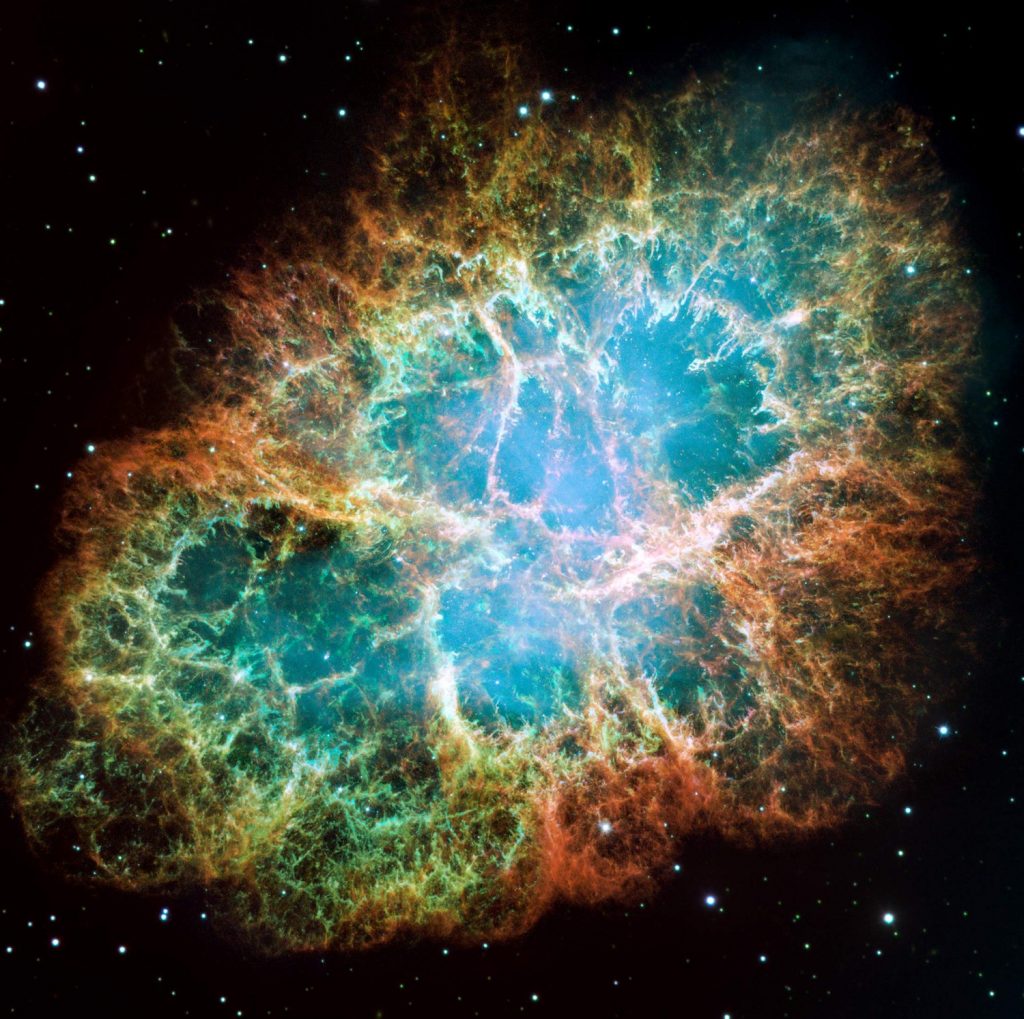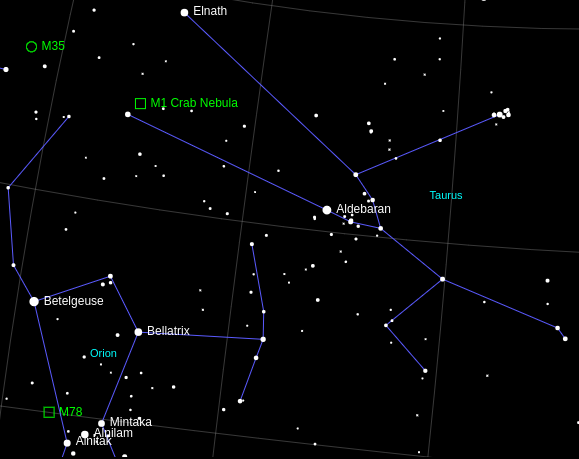The Crab Nebula — M1 in the Messier Catalogue — is a supernova remnant – the remains of an exploding star – in the constellation of Taurus.
At its centre is a pulsar (a rapidly rotating neutron star) believed to be less than 20 miles in diameter, formed from the remains of the original supernova progenitor star. The cloud of dust and gases making up the visible nebula surrounding the star was formed from the debris of the supernova explosion and extends to around 11 light years in diameter.
The Crab Nebula has been identified as the remnant of the supernova recorded by Chinese astronomers as a ‘guest star’ that was visible between July 1054 and April 1056 AD. This supernova is given the designation SN 1054 after the year it was first observed.

Discovery and Naming
The Crab Nebula was discovered by John Bevis in 1731 and was independently rediscovered by Charles Messier in 1758. Messier originally mistook the Crab Nebula for Halley’s Comet, which he had been searching for in the same area of the sky. After realising his mistake, Messier decided to record the positions of similar objects that might also be mistaken for comets. Hence the Crab Nebula is designated as M1, the first object listed in the Messier Catalogue.
In 1844, William Parsons – the 3rd Earl of Rosse – observed the nebula using a 36-inch telescope and referred to it as the “Crab Nebula” due to its resemblance to a crab in the drawings that he made.
Other designations for the Crab Nebula include Taurus A and NGC 1952 in the New General Catalogue.
Location
The Crab Nebula can be found close to the star ζ Tauri, (Zeta Tauri), a bright star often identified as the lower of the bull’s horns in the constellation of Taurus.
The equatorial coordinates of the Crab Nebula are 05h 34m 31.94s, +22° 00′ 52.2″.
To find the Crab Nebula’s current position in the sky from your location, visit our Night Sky Simulator.
